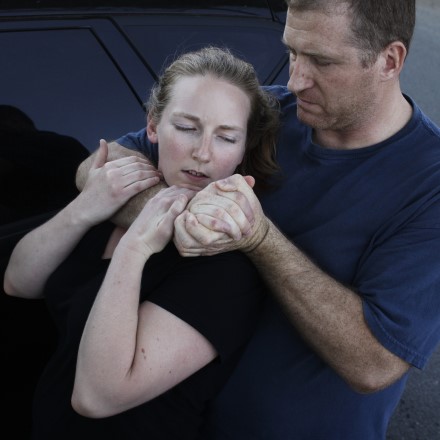Krav Maga Strategies & Principles

Strategies & Principles Articles
- Attack The Attack, Attack The Attacker
- Retzef & Attacking Soft Targets
- Using The Body's Natural Defenses
- Simultaneous Blocks & Counters
- 10 Principles Of Fighting
- 10 Principles of Fighting - Principle 2
- 10 principles of Fighting - Principle 3
- 10 Principles of Fighting - Principle 4
- 10 Principles of Fighting - Principle 5
- Principle 9
- Principle 10
- Being Realistic In What We Expect
- The Evolution of "The Street Fight" & Krav Maga
- The Moral Authority To Act
- Meeting Force With More Force
- Defense & Attack
- Beyond Survival - Learning To Let Go
- Giving Up
- Choking Under Pressure
- Meeting Violence With Violence
- Screaming & Shouting
- Disruption Before Execution
- Disrupt, Damage, Destroy, Disengage
- Multiple Assailants
- Situational Self Defense
- Sink, Swim or Float?
- Inflicting Damage on Others
- Protecting Friends & Family Members etc.
- Dirty Fighting - Eye Gouges, Biting and Spitting
- Becoming Versatile
- Not Wanting To Hurt People
- How Simple Is Simple?
- When Instead Of How
- Sun Tzu & Death Ground
- Control Of Range
- Using The Environment To Your Advantage
- Protecting Fingers
- Using Natural Responses to Your Advantage
- The Flinch or Startle Reflex
- Fighting Dirty
- What Happens Next
- Commitment
- Creating Hesitancy
- Krav Maga Concepts & Principles
All Krav Maga Articles
Krav Maga's Use Of Strategies & Principles
Krav Maga differs from many martial arts and self-defense systems in that it is not defined by its techniques, but by the concepts and principles upon which the system is founded e.g., a Karate style is made up of the techniques and movements that are contained in its Katas, whereas Krav Maga is based on ideas, such as, “If it’s a life-threatening attack, attack the attack. If it’s a non-life-threatening attack the attacker.” etc. Because there isn’t a rigid set of techniques to threats and attacks, the system can evolve and develop new and more effective solutions based on the underlying principles and concepts e.g., one solution to a knife threat, where the blade is positioned against the stomach, had to change when it became apparent that assailants in certain locales would actually press the knife into the stomach, rather than just hold it in front; instead of pushing the knife to the side that would be injurious the knife was pushed forward, as the stomach is pulled back. The technique changed but it still adhered to the concept of having a hand-defense (pushing the knife away), and a body-defense (pulling the stomach back). Basing and founding the system upon such ideas and concepts means that Krav Maga can adapt to new forms of violence, and it is this which makes it a truly reality-based self-defense system i.e., the techniques and solutions reflect real-life violence, rather than what a self-defense instructor might imagine violence looks like.
There are certain principles which Krav Maga techniques must adhere to and perhaps one of those which most strongly identifies Krav Maga solutions, is that they must be as close to natural responses as possible e.g., when somebody applies a choke or strangulation, where the airway is blocked, the hands will naturally come up to try and pull the offending arm or hands away; this is an instinctive response that occurs naturally, and so the Krav Maga solution(s) to such an attack is based off of this. In this way Krav Maga is about what you will do, not what you may want to do – somebody might think it would be more effective to strike the groin, or rake the eyes etc., however the hands will be naturally trying to pull the attacker’s hands/arm away, and so will not be in a position to do so. Also, from a Krav Maga perspective, such a choke or strangulation is categorized as a life-threatening attack (if the choke/strangulation is not cleared then the person being attacked will eventually be rendered unconscious and potentially killed), and so the strategy should be to “attack the attack”, rather than “attack the attacker” etc. This example demonstrates how the different concepts and principles support each other.
Another fundamental idea that is a foundation of Krav Maga, is that techniques can be performed when a practitioner is fatigued and/or under stress and duress. The system and approach recognizes that when an individual is attacked or threatened they are likely to be in a sub-optimal physical and mental state, and so the techniques taught must be able to be performed in this state. This means that whatever solutions are created must be straightforward to apply, which is why wherever possible they are based off of natural and instinctual responses that the body will perform automatically – such as bringing the hands up to clear a strangulation or choke etc.